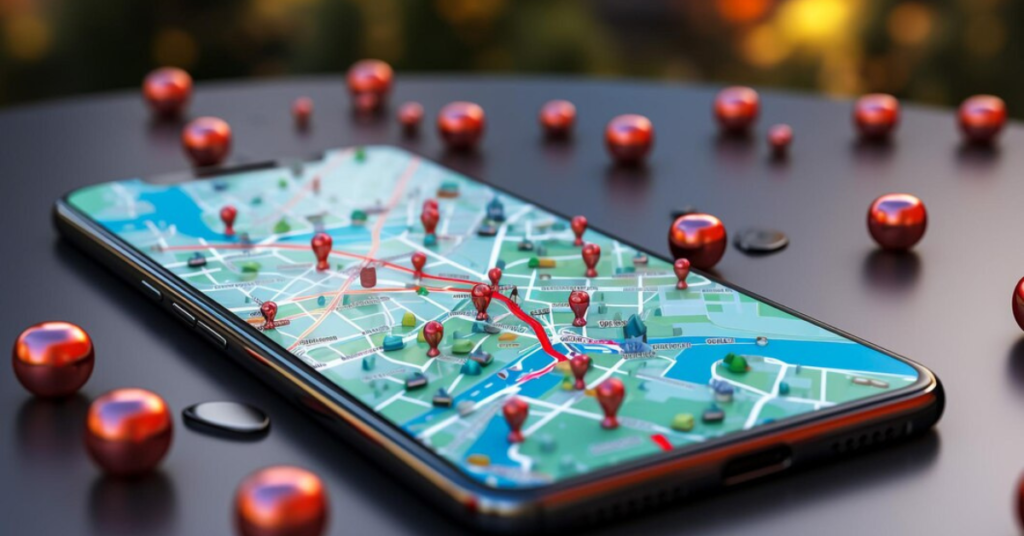In the ever-evolving landscape of digital marketing, innovative strategies continue to emerge, enhancing the way businesses connect with their audience. One such strategy is geofencing, a location-based marketing tactic that allows businesses to target users within a specific geographic area. This method is particularly effective in reaching smartphone users, as these devices enable the real-time location data necessary for triggering location-based content. This article delves into the intricacies of geofencing, exploring its mechanisms, benefits, applications, and best practices.
Understanding Geofencing Technology
What is Geofencing?
Geofencing is a technology that creates a virtual boundary around a physical location using GPS (Global Positioning System), RFID (Radio Frequency Identification), Wi-Fi, or cellular data. When a user enters or exits this predefined geographic area, the geofencing system can trigger a response, such as sending a notification, an advertisement, or an alert.
How Does Geofencing Work?
The process of geofencing involves several key components:
Defining the Geofence: Marketers or businesses establish the virtual boundaries of the geofence, which can range from a small radius around a store to an entire city.
Location Data Collection: Smartphones and other devices with GPS capabilities continuously collect location data, which is used to determine when a device enters or exits the geofenced area.
Trigger Mechanism: When a device crosses the geofence boundary, it triggers a pre-defined action. This could be a push notification, an in-app message, an SMS, or even an email.
Engagement: The triggered action engages the user with relevant content, offers, or information tailored to their location.
Benefits of Geofencing in Marketing
Geofencing offers numerous advantages that make it a powerful tool in the digital marketing arsenal:
Precision Targeting
Geofencing allows businesses to target users based on their precise location. This level of targeting ensures that marketing messages are highly relevant, increasing the likelihood of engagement and conversion.
Improved Customer Engagement
By delivering timely and location-specific content, geofencing enhances customer engagement. Users are more likely to interact with content that is pertinent to their current context, such as special offers when they are near a store.
Enhanced Data Collection
Geofencing provides valuable insights into user behavior and movement patterns. Businesses can analyze this data to better understand their customers, optimize marketing strategies, and improve overall customer experience.
Cost-Effective Marketing
Compared to traditional advertising methods, geofencing can be more cost-effective. It reduces waste by targeting only those users who are within the defined geographic area, thereby maximizing the return on investment (ROI).
Competitive Advantage
Businesses can gain a competitive edge by utilizing geofencing to attract customers who are near their location, potentially diverting them from competitors.
Applications of Geofencing Across Industries
Geofencing is a versatile technology with applications across various industries:
Retail
Retailers use geofencing to attract customers to their stores by sending location-based offers and promotions. For example, a clothing store might send a discount coupon to customers who are within a one-mile radius.
Hospitality
Hotels and restaurants utilize geofencing to enhance guest experiences. A hotel might send a welcome message with check-in details as guests arrive, while a restaurant might promote daily specials to nearby passersby.
Real Estate
Real estate agents leverage geofencing to engage potential buyers. Notifications about open houses or new listings can be sent to users who are in the vicinity of a property.
Healthcare
Healthcare providers use geofencing to improve patient care. Patients can receive reminders for appointments or health tips when they are near a healthcare facility.
Entertainment and Events
Event organizers use geofencing to enhance the attendee experience. Concert-goers might receive notifications about merchandise discounts or event schedules when they enter the venue.
Automotive
Car dealerships use geofencing to attract potential buyers. Notifications about test drives or special promotions can be sent to users who are near the dealership.
Implementing Geofencing: Best Practices
To maximize the effectiveness of geofencing in marketing, businesses should follow these best practices:
Define Clear Objectives
Before implementing geofencing, it’s crucial to define clear marketing objectives. Whether it’s increasing foot traffic, boosting sales, or enhancing customer engagement, having a clear goal will guide the strategy.
Choose the Right Geofence Size
The size of the geofence should be appropriate for the business and its objectives. A smaller radius might be suitable for a retail store, while a larger area could be beneficial for a city-wide event.
Ensure Privacy Compliance
Respecting user privacy is paramount. Businesses must comply with privacy regulations and ensure that users are aware of and consent to location tracking.
Craft Relevant and Compelling Content
The success of geofencing campaigns depends on the relevance and appeal of the content delivered. Personalized offers, timely information, and engaging messages are key to capturing user interest.
Monitor and Optimize Campaigns
Continuous monitoring and optimization are essential for successful geofencing campaigns. Analyzing data on user engagement and campaign performance can help businesses refine their strategies.
Test and Iterate
Experimenting with different geofencing strategies can reveal what works best for a specific audience. A/B testing various messages, offers, and geofence sizes can provide valuable insights.
Challenges and Considerations
While geofencing offers numerous benefits, there are also challenges and considerations to keep in mind:
Battery Drain
Continuous location tracking can drain device batteries. Businesses should optimize their geofencing solutions to minimize battery consumption while maintaining accuracy.
Privacy Concerns
User privacy is a significant concern with location-based marketing. Businesses must be transparent about data collection practices and provide opt-out options to users.
Accuracy of Location Data
The accuracy of location data can vary depending on the technology used (GPS, Wi-Fi, cellular). Ensuring high accuracy is critical for effective geofencing.
Integration with Other Marketing Channels
Geofencing should be integrated with other marketing channels to create a cohesive and comprehensive marketing strategy. Coordinating geofencing efforts with social media, email marketing, and in-app messaging can amplify results.
Case Studies: Successful Geofencing Campaigns
Dunkin’ Donuts
Dunkin’ Donuts implemented a geofencin’g campaign to target users near their locations with special offers. The campaign resulted in a significant increase in store visits and customer engagement.
Starbucks
Starbucks uses geofencin’g to enhance their mobile app experience. Customers receive notifications about nearby stores, special promotions, and personalized offers, leading to higher app engagement and sales.
Uber
Uber utilizes geofencin’g to streamline the ride-hailing experience. When users arrive at airports, they receive notifications with details on pickup locations and estimated wait times, improving overall user satisfaction.
Future of Geofencing in Digital Marketing
The future of geofencin’g in digital marketing looks promising, with several trends and advancements on the horizon:
Integration with Augmented Reality (AR)
Combining geofencin’g with augmented reality can create immersive and interactive experiences for users. For example, retail stores can offer AR-based virtual try-ons for products when customers are near the store.
Enhanced Personalization
Advancements in artificial intelligence (AI) and machine learning will enable even more personalized geofencin’g campaigns. Predictive analytics can help deliver hyper-targeted content based on user behavior and preferences.
Expansion to Wearable Devices
As wearable devices become more prevalent, geofencin’g can extend beyond smartphones. Smartwatches and other wearables can receive location-based notifications, broadening the reach of geofencin’g campaigns.
Improved Data Security
With increasing concerns about data privacy, future geofencin’g solutions will likely incorporate enhanced security measures to protect user data and ensure compliance with regulations.
Conclusion
Geofencin’g represents a powerful tool in the digital marketer’s toolkit, offering precise targeting, improved customer engagement, and valuable insights into user behavior. By understanding the technology, benefits, applications, and best practices of geofencin’g, businesses can effectively leverage this tactic to achieve their marketing objectives. As technology continues to evolve, geofencin’g will play an increasingly vital role in creating personalized, timely, and relevant marketing experiences for users across various industries.







